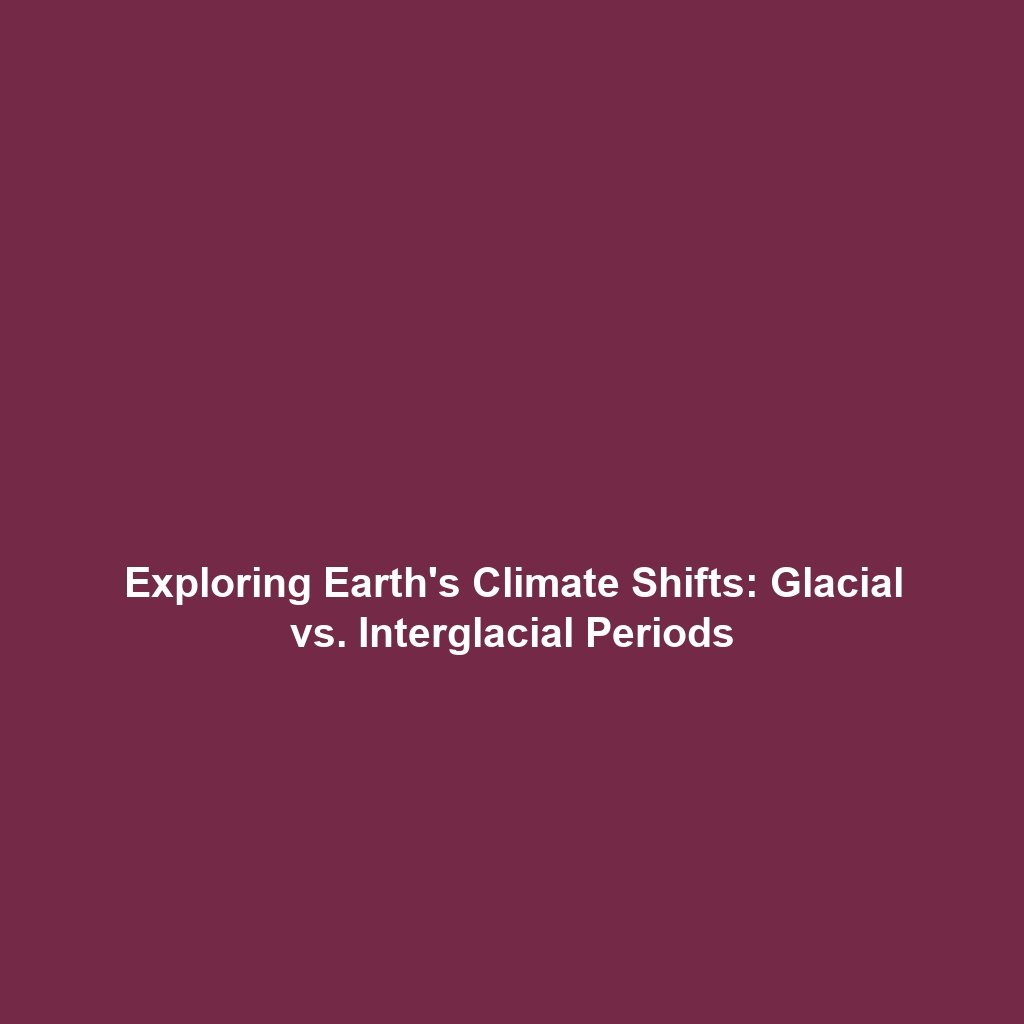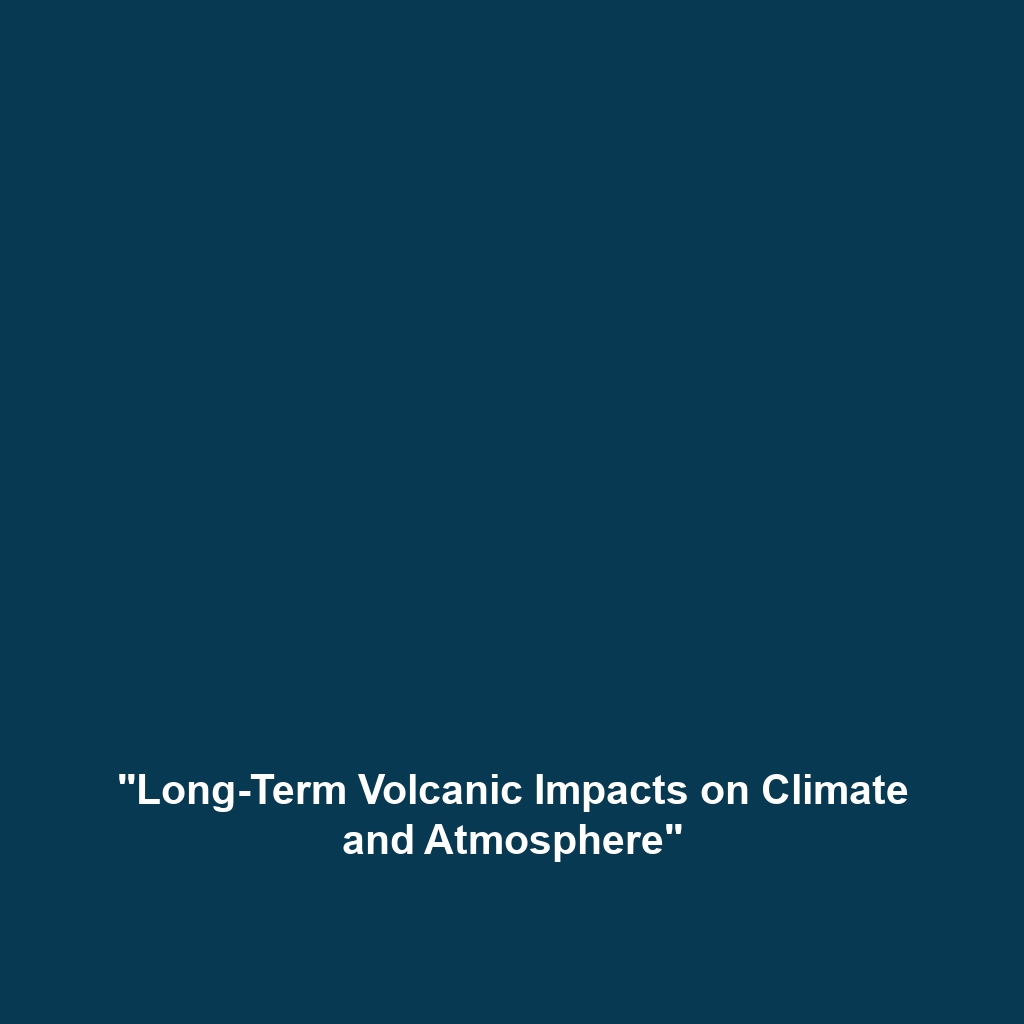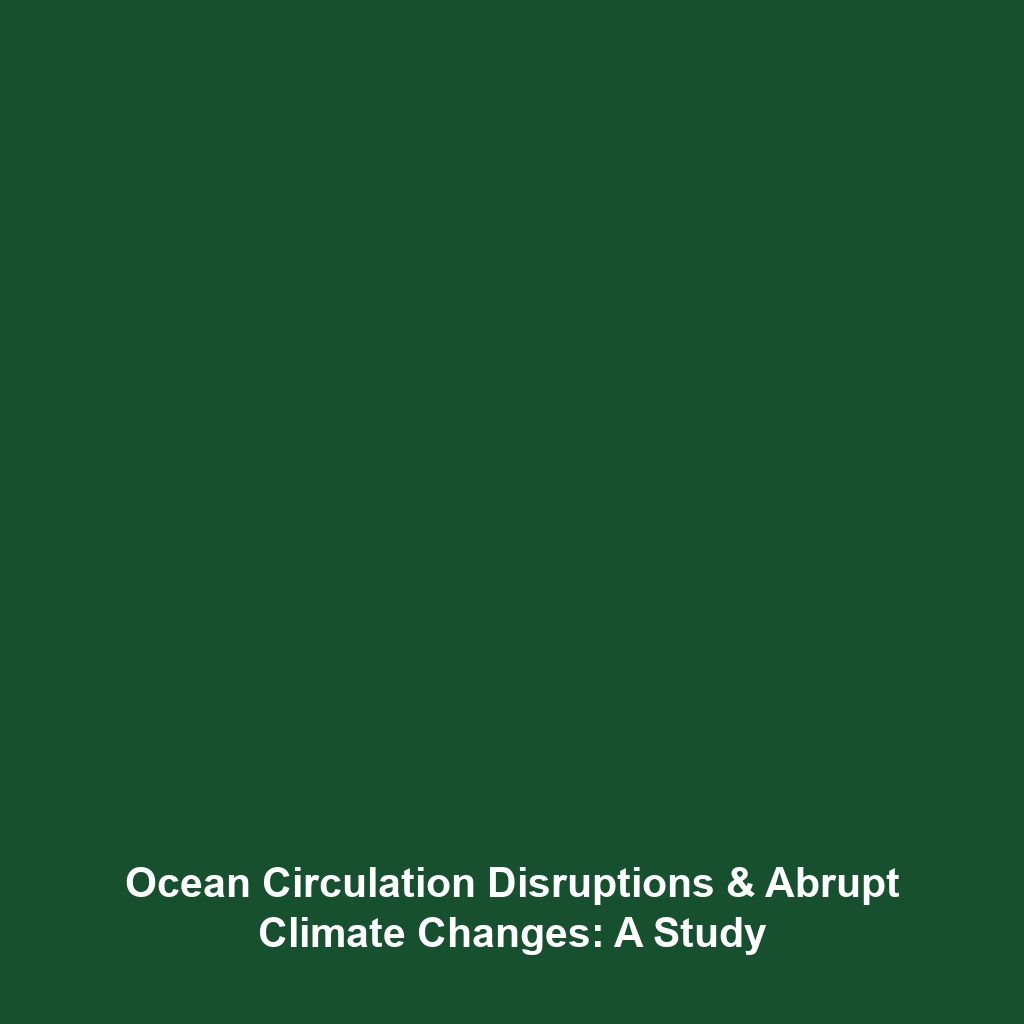Volcanic Eruptions and Climate
Introduction
Volcanic eruptions significantly influence climate patterns, impacting global temperatures and atmospheric conditions. Understanding the relationship between volcanic eruptions and climate history is crucial, as these geological events can lead to drastic changes in weather that last for years. By studying these phenomena, scientists can gain insights into past climate variations, which in turn can inform future climate models. This article delves into the intricate ties between volcanic activity and climate change, providing a comprehensive overview of this fascinating intersection in climate history.
Key Concepts
Volcanic Influence on Climate
The primary impact of volcanic eruptions on climate is through the release of ash and sulfur dioxide (SO2) into the atmosphere. This can cause:
- Stratospheric Aerosols: Volcanic eruptions inject aerosols into the stratosphere, reflecting sunlight and cooling the Earth’s surface.
- Greenhouse Gas Emissions: Some eruptions release greenhouse gases that can contribute to warming trends over extended periods.
Historical examples, such as the 1815 eruption of Mount Tambora, illustrate how volcanic events can lead to significant climatic consequences, including the Year Without a Summer.
Climate History Context
Volcanic activity is a critical component of climate history, contributing to variations in temperature and precipitation patterns throughout the millennia. Understanding these alterations helps researchers reconstruct past climates and predict future shifts, thus fitting volcanic eruptions into a broader narrative of climatic changes.
Applications and Real-World Uses
The study of volcanic eruptions and climate has several real-world applications, including:
- Ecosystem Management: Understanding how volcanic eruptions affect biodiversity helps in conservation planning.
- Climate Prediction Models: Incorporating the climatic impacts of past eruptions improves predictive models for future climate scenarios.
- Agricultural Practices: Knowledge of historical climate patterns informs agricultural strategies under varying conditions influenced by volcanic activity.
These examples highlight how the study of volcanic eruptions directly contributes to our understanding of climate history.
Current Challenges
Despite the advancements in research, several challenges remain in studying volcanic eruptions and climate:
- Data Limitations: Incomplete historical records make it challenging to fully understand past volcanic events and their impacts.
- Methodological Issues: Differences in analysis techniques can sometimes result in conflicting conclusions about volcanic influences on climate.
- Climate Variability: The complex interactions between various climatic factors make it difficult to isolate the effects of volcanic activity.
These issues highlight the complexities and intricacies in the field of climate history.
Future Research and Innovations
The future of research in volcanic eruptions and climate is promising, with innovations on the horizon:
- Advanced Modeling Techniques: Next-gen climate models that incorporate real-time data from volcanic activity will provide more accurate predictions.
- Satellite Monitoring: Ongoing improvements in satellite technology will enhance our ability to monitor volcanic eruptions and their atmospheric effects.
- Interdisciplinary Studies: Collaborations across geology, climatology, and ecology will lead to a more holistic understanding of the impacts of volcanic eruptions.
These advancements will greatly contribute to the inventory of knowledge in climate history.
Conclusion
In summary, volcanic eruptions play a vital role in shaping our climate and are pivotal to understanding climate history. As researchers continue to unravel the complexities of these geological phenomena, it is essential to recognize their long-term implications for our planet. Engaging with this topic further can enhance our understanding of Earth’s climatic past and prepare us for future changes. For more insights into climate history, consider exploring other relevant studies linked below.
Further Reading








